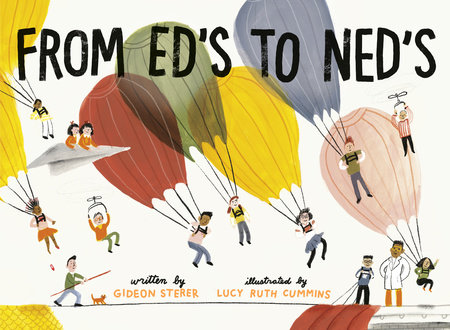How to Keep Children’s Imaginations and Independence Alive
by Gideon Sterer
There’s a stage in childhood where kids figure out that they might just have a little control over what happens in their world. Maybe they start picking out their own clothes or strike out to toast their own waffle or decide, in the face of bedtime darkness, they’ll just stay put this time and deal with the monsters on their own.
In these moments, children grow and gain some kind of independence and realize, slowly, the world can be a navigable place. In high school, I remember when my oldest friend got a car and all of us piled in for the first time — no longer dependent on parents for rides — and the whole world seemed to beckon and glow.
Long before that, though, we figured out that we, ourselves, could make plans. Plans for us consisted of play dates and sleepovers and were, unquestionably, the highlight of existence. The idea of going to a friend’s house and the prospects therein were what it was all about.
My new children’s book, From Ed’s to Ned’s, illustrated by Lucy Ruth Cummins, is a celebration of those first thrilling pangs of childhood agency, during which kids dream up and create a world they want to live in – in this case, getting all their friends together by any means necessary and creating community.
As children climb on laundry lines, swing on vines, get shot from cannons, and dig to castles, the book is also an ode to off-beat transportation, friendship, inclusion, and getting out into the real world when it’s so easy these days to have semblances of relationships on screen. I’m not sure where all this technology is going to lead us, but I was thrilled when I first received the art for the book and saw Lucy had begun the story by having two children abandon their television for the great neighborhood beyond. Growing up in the woods and wild, and being molded by it, I’ll bang the drum for anything that helps get kids outside, and I hope that moment and the many following can serve as inspiration.
Of course, in the middle of a global pandemic, congregating children and exuberant neighborhood roving aren’t on the menu. But, as always, a brighter tomorrow awaits… if we build it. What do your children want? What do they miss? Whether it’s as simple as visiting the shuttered ice cream shop or as complicated as planning a pet-parade, there’s tremendous value in visualizing the world we want and mapping how to get there… eventually.
One activity proving popular during this quarantine is a keeping a “looking forward to jar,” in which dreams and activity ideas are written on paper scraps and safely stored for later use. The exercise can also double as a journaling or writing exercise in which children can be honest about what they miss and how they feel. Best of all – to me at least – inherent in the exercise is hope.
Another recommended activity is planting something. Anything! It’s not too late in the season to get a seed packet or tiny tree or flower and put it in the dirt. One need not a garden or farm – a tiny windowsill and pot will do. The fruits of one’s labors will be readily apparent all while contributing to a more verdant planet.
I’ll keep it a secret, but by the end of From Ed’s to Ned’s the children have, collectively, executed an out-of-this-world vision through some doggedness, hard work, and creativity — by their own volition and desires, all despite the draconian imposition of bedtime.
I remember what it felt like to realize I could bend the world a little bit and that I wasn’t just floating through. That awareness can present itself in many situations and forms. Going out and making something tangible happen as a child is a precursor to going out and making something tangible happen as an adult. Chasing a tiny dream precedes chasing a big one. I hope the children who read From Ed’s to Ned’s will feel a little more playful, a little more powerful, and little bit more like the world is theirs to bend.

